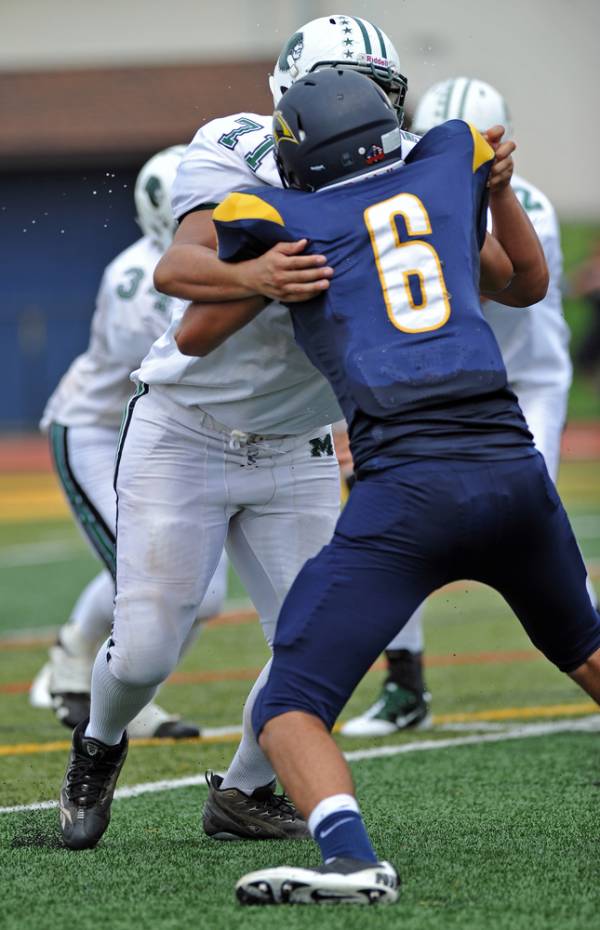For those who played sports growing up or have children who play sports, the common belief is hits and bumps to the head are no big deal if they don’t induce symptoms of concussion. Two recent studies conducted on high school athletes in football and hockey, however, concluded this is not true and the accumulation of smaller hits to the head is the actual, serious concern.
The first study was done at the University of Rochester Medical Center and conducted on high school hockey and football players. Scientists followed the athletes through a regular sports season.
Athletes’ brains were examined using diffusion sensor imaging (DTI), which is similar to an MRI. DTI measures the movement of water in the brain. When the brain swells and water collects, this is recorded in the DTI scan. In this study DTI scans were conducted pre-season and post-season.
Researchers also had the athletes keep a personal journal of the number of hits to the head they experienced and any subsequent symptoms. Athletes in this study received from 36 to 399 blows to the head.
Even though only one athlete was diagnosed with a concussion during the season, the rest all showed signs of changes to the white matter in their brains. The level of these changes correlated to the information recorded in their journals. Overall the changes in white brain matter were three times the amount of changes recorded in the DTI scans of the control group.
In a second, separate study conducted by Purdue University researchers spent two years studying high school football players. In this study scientists gathered information through helmet-sensors measuring impact, cognitive tests, and functional magnetic resonance imaging (fMRI).
The fMRI allowed researchers to actually see which parts of the brains the athletes were using during neurocognitive testing. Over the course of the season they saw a change in the parts of the brain being activated, which the researchers took to mean that the athletes were incurring brain damage and adapting around it.
 In this study six athletes were diagnosed with concussions, but 17 others indicated changes in their brain even though they never had an actual concussion. Like the Rochester study, the degree of changes in the brains in these players correlated with the number of hits they had taken to the head.
In this study six athletes were diagnosed with concussions, but 17 others indicated changes in their brain even though they never had an actual concussion. Like the Rochester study, the degree of changes in the brains in these players correlated with the number of hits they had taken to the head.
Athletes in the study experienced between 200 to 1,900 blows to the head during a season. These hits ranged in force from 20 to 300 Gs. The study has since expanded to include soccer players. Heading the ball in soccer is a roughly 20 G impact.
This research is of special concern with younger athletes whose brains are still forming as well as life-long athletes in any high-impact sport. These athletes are at risk of incurring lifelong neurological effects and/or developing chronic traumatic encephalopathy, a progressive degenerative disease of the brain.
In both studies scientists suggested there could be a critical number of blows to the head that when reached should mean an athlete is removed from play or practice.






